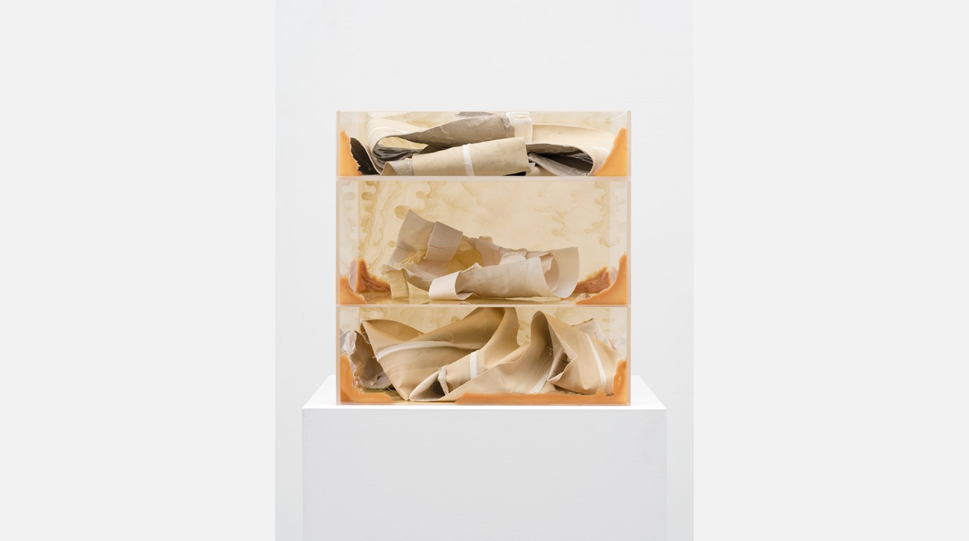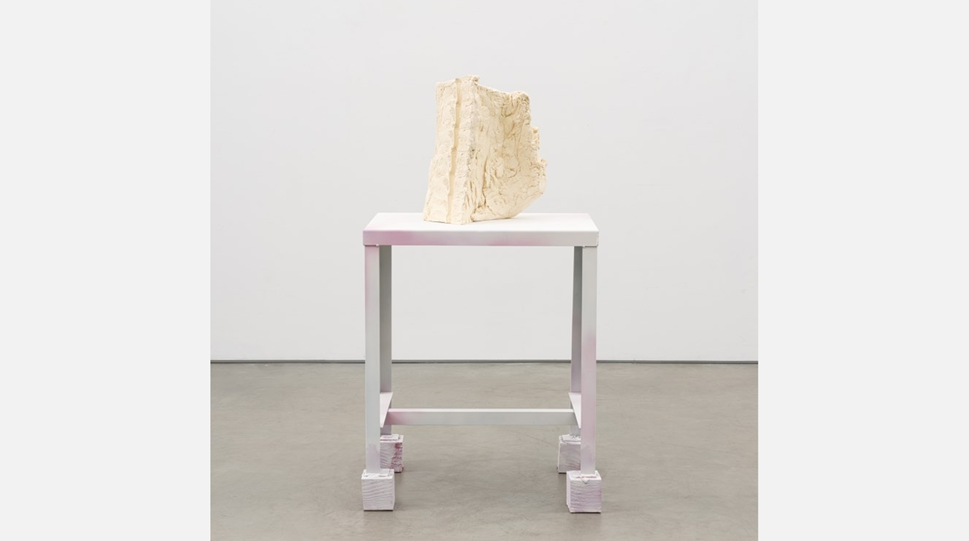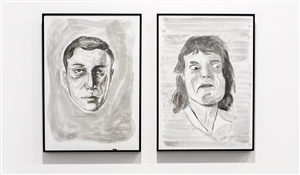On Shahryar Nashat's Show
01 Dec 2021Original text in Farsi by Sale Sharifi
Translated to English by Omid Armat
Artworks of Shahryar Nashat were displayed in an online exhibition titled "Firsthand" from October 22 to November 5, 2021 on David Kordansky Gallery's website. The show consisted of sculptures and a video, all of which were created during the Coronavirus pandemic.
Shahryar Nashat was born in 1975 in Geneva, Switzerland, where he studied photography and filming. He engaged in sculpture art after he moved to Berlin. Although he presents his works mostly as sculptures and videos, he doesn't limit himself to any medium; rather, he chooses between different mediums based on his idea. He regards the human body as his main subject, and never confines himself to visual analysis of it. Death, fragility, flexibility, and separation are the concerns of these human pieces. Nashat doesn't show the body in an integrated form, but he presents it in pieces far from each other; from the skin to the bone marrow. For Shahryar Nashat, this fragmentation indicates our distance-based lives. Social networks have caused separation and distance, and he perceives this separation as fragmentation of body.
Nashat displays his artworks with a special precision. He is very careful about the sculptures' stands and the way they are presented. By changing the light and architecture of the gallery, he tries to suggest a spiritual interaction between the viewer and the artwork in order to either provide an ambiguous view on the future of humankind or at least move the viewers to think, even if they don't understand his human pieces. Before the Coronavirus pandemic, Nashat used to create most of his works with resin. However, considering the increased size of his sculptures, he found papier maché technique to be more suitable. He applies a layer of resin on papier maché so as to create the texture he wants.

Shahryar Nashat | Untitled | 2021 | Mixed media (acrylic paint, papier maché, resin, etc.) | 83.8×162.6×81.3 cm
Nashat doesn't like to produce things reminding of flesh, but he considers creating these sculptures as a solution that makes it possible to move past the surface of the body to acquire an inner visualization of human. Nashat puts flesh in an abstract situation. By creating flesh-like sculptures he minimizes the distance between humans and animals, thus putting forward the question that when death comes, is there any difference between the two? And he says no, neither when dying, nor when living; we are just animals almost always. Fear, anxiety, anger, eating, sexual relationship, etc. are the things we have in common with animals. Our lives are mostly directed towards these issues. Nashat believes that we think that we direct our bodies with our brains, while we are actually unaware of the body's intelligence.
Nashat's focus on body is the result of an accident he had at a young age. He fell while he was running, and deeply injured his knee. Looking at his open wound with the cartilage tissue visible, and then the treatment process, caused him to create artworks concentrated on human body, thus conveying a variety of meanings about it. Flesh, joints, cartilage, bone, and bone marrow are all valid elements within the visual territory of Nashat's works. He finds movement in joints, and stillness in flesh. Joints of a living body move, and that is how joints get into Nashat's world.
There is also a video in the "Firsthand" show which, in 17 seconds, displays an animation of a character falling on the green floor of an empty shed over and over. The character is wearing a hat and falls on his knees. His fall not only clearly expresses all the meanings of the sculptures, but also shows the external appearance of the body. However, the close shot of the character's ear at the beginning of the animation is very similar to the sculptures. Nashat's engagement with the body and deriving various meanings from it is indicative of his precision in studying his subject. His works have deep, painful meanings, but present less irritant appearance so as to invite us to think. Nashat's artworks are presented along with a detailed interview conducted by Juliana Halpert in the "Viewing Room" of David Kordansky Gallery's website.
Slider 1: Shahryar Nashat | Bad House | 2020 | Mixed media (Acrylic paint, fabric, pigment, etc.) | 46×46×30.2 cm
Slider 2: Shahryar Nashat | Untitled | 2021 | Mixed media (Acrylic paint, wood, metal, etc.) | 116.2×61×45.7 cm







